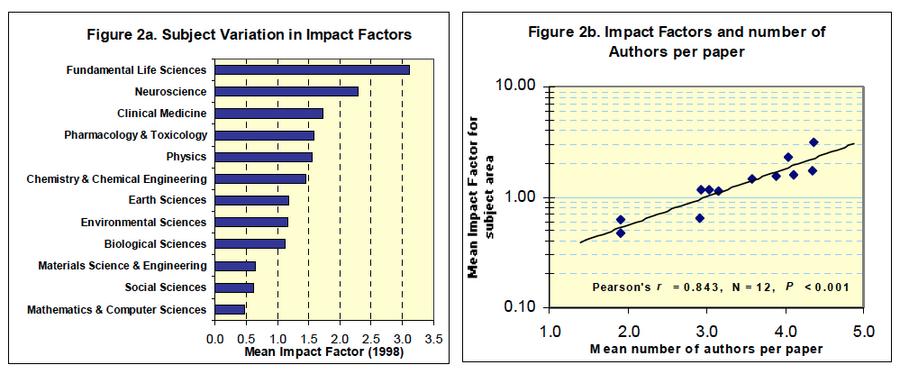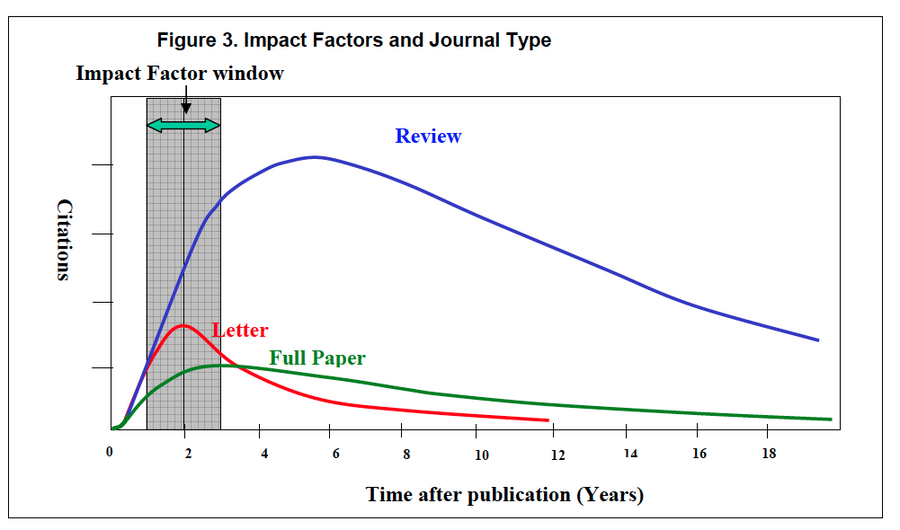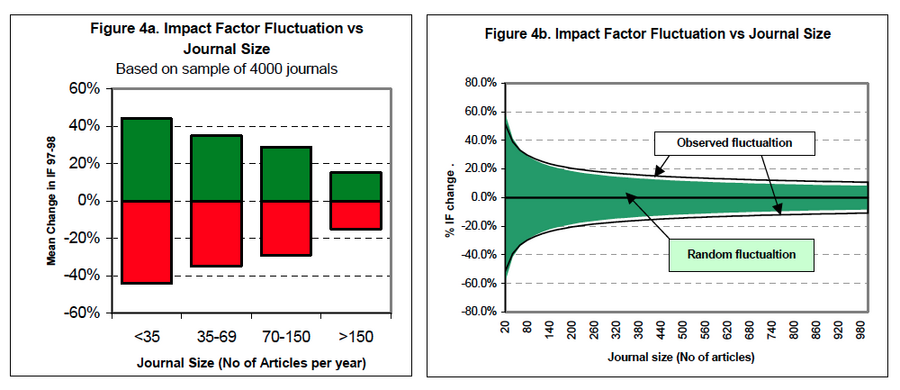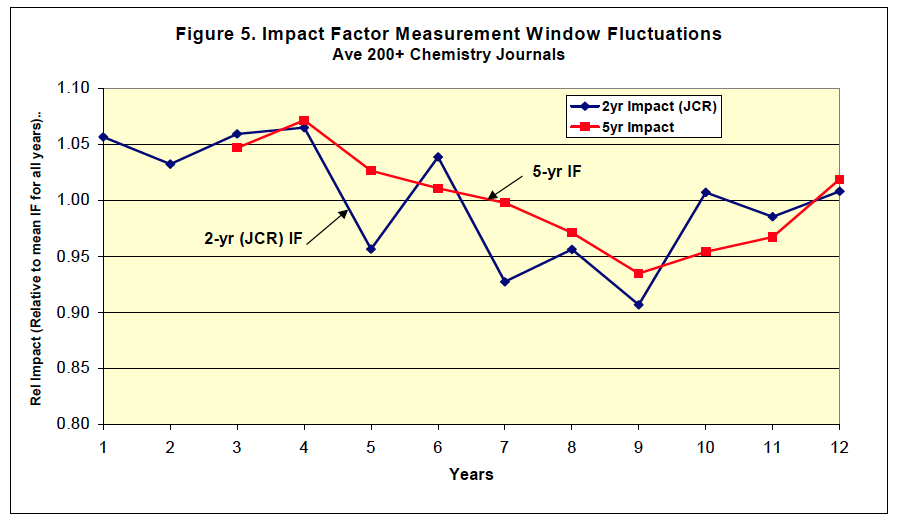Course:KIN570/Topics/Impact Factor
| Research Methods in Kinesiology | |
|---|---|
 | |
| KIN 570 | |
| Section: | 001 |
| Instructor: | Dr. Nicola Hodges |
| Raza Malik | |
| Email: | |
| Office: | |
| Office Hours: | |
| Class Schedule: | |
| Classroom: | |
| Important Course Pages | |
| Syllabus | |
| Lecture Notes | |
| Assignments | |
| Course Discussion | |
Impact Factor
The impact factor was proposed by Dr. Eugene Garfield in the late 1950s in order to determine which journals were the most important and which were not as important. The impact factor of an academic journal is a measure of how articles within a journal are cited over a period time; it is used to rank journals within a specific field. It is generally accepted that the higher the impact factor, the greater its importance. Dr. Garfield is the founder of the Institue for Science information (ISI), the group responsible for putting together the impact factor for all journals. ISI was bought out by the Thompson Corporation in 1992.
The Algorithm
The 2 year impact factor for journal X = A/B
A = Citations in 2011 by indexed journals to articles published in 2009 and 2010
B = Articles published in X in 2009 and 2010
The 5 year impact factor for journal X = A/B
A = Citations in 2011 by indexed journals to articles published in 2006, 2007, 2008, 2009 and 2010
B = Articles published in X in 2006, 2007, 2008 2009 and 2010
The Numerator - Denominator Problem
The term article appears in both the numerator and denominator of the impact factor algorithm. Interestingly, this term is defined differently among these two cases. [1] [2].
- Article in the numerator includes all papers published in that journal. i.e. Full papers, reviews, proceeding papers, editorials, news items, letters to the editor, book reviews, proceeding papers etc.
- Article in the denominator only includes full articles, reviews and proceeding papers.
The major problem with this type of algorithm is that it favours journals which publish items that are not included in the denominator, but can be included in the numerator. This leads to an inflation of the impact factor score.
Sociological Factors
2 sociological factors which affect the impact factor will be discussed:
- The subject area and number of authors of the paper
- Article and journal type (full article, review, letters etc..)
Subject Area and Number of Authors
It is important to only compare journals within the same subject area, since the impact factor varies significantly from one subject area to the next. For example, the mean impact factor in 1998 for fundamental life sciences was approximately 3, and for mathematics and computer science it was approximately 0.5 (Fig. 1)[1]. It is possible for the highest impact factor journal in one field to be the lowest in another field, and vice versa. Furthermore, the number of authors per paper also varies from field to field. On average, social sciences has 2 authors per paper whereas fundamental life sciences usually have 4 or more [1]. There is a strong correlation between impact factor score and number of authors per paper (Fig. 1) . This seems logical since authors are more likely to cite their own work. Thus, the more authors, the more cites that paper will get.
Fig 1: Subjectivity and Authorship [1]

Article and Journal Type
The impact factor of a specific journal is also affected by the type of journal it is, since different types of articles have different citation patterns. Figure 2 shows that letters are cited immediately after publication with a peak at 2 years, but they do not tend to get cited after this. On the other hand, full papers are not cited so quickly and often peak at year 3, however they continue to be cited many years after publication (Fig. 2). Review journals seem to be in a league of their own, they are highly cited immediately after publication peaking at year 6 and continue to be cited for many years (Fig. 2).
Figure 2: Article and Journal Type [1]

Statistical factors
Two statistical factors that affect the impact factor will be discussed
- Journal Size
- Citation Measurement window
Journal Size
The size of the journal is important because it will determine how much the impact factor fluctuates from year to year. Smaller journals usually publish a smaller number of papers, so any change they make will have an affect on their impact factor. For example, if a smaller journal decides to add a few more articles that are included in the numerator, but are not included in the denominator, this could lead to inflation of the impact factor ( see #The Algorithm and #The Numerator - Denominator Problem). In addition, if the journal adds more reviews than full papers, as seen above, this could also affect the impact factor. Large journals are not exempt from these fluctuation, but their deviations are usually smaller. The left side of figure 3 shows how smaller journals can fluctuate from anywhere between +/- 40% from year to year, while larger journals can fluctuate up to +/- 15% [1].
A journal's impact factor does fluctuate from year to year, but how much of this fluctuation is random? Journals are subjected to a random fluctuation of the impact factor because of its biased sample (See Amin & Mabe, 2000 for a greater discussion). The right side of figure 3 shows that a journal with 140 publications must change by +/- 22% in order to have a significant change in its impact factor [1]. "As a rule of thumb journals with impact factors that differ by less than 25% belong in the same rank” (Amin and Mabe, 2000, pg 5)
Figure 3: Journal Size [1]

Citation Measurement Window
The time at which the impact factor is taken has an affect on a journal's overall score. The 2 year and 5 year impact factors are the two most common ( see #The Algorithm). The 2 year impact factor can change a great deal every 2 years, whereas the 5 year impact factor shows a more general trend (Figure 4). The time at which you measure the impact factor can be important because the ranking of the journal can change based on whether the 2 or 5 year impact factor is being compared.
Figure 4: Citation Measurement Window [1]

Other Issues
- Inconsistent classification of document type
- There have been situations where a journal's impact factor is calculated incorrectly due to the incorrect classification of an article [2] [3]. It is important that articles are defined correctly because its definition determines whether it is counted in the denominator or numerator; this can lead to altered impact factors ( see #The Algorithm and #The Numerator - Denominator Problem).
- Does not take into account self citations
Note: These are not the only issues associated with the impact factor. For a greater discussion please refer to references.
What is it Being Used for Today
The impact factor was initially created to determine which journals were better and which journals were not as good. This was beneficial to researchers as they could potentially read higher impact journals for better papers. Today, the impact factor is used for much more.
Currently, the impact factor is being used to hand out grant money and to rank scientists; such that if a scientist publishes in higher impact journals, they are more likely to receive a grant and hold a higher status among their peers[4]. Furthermore, the impact factor is dictating science; scientists feel pressured to bias their research so they can get published in higher impact journals[3][4]. Lastly, the impact factor has become a requirement for tenure or graduation; there are places in the world that require a scientist to publish in high impact journals to receive tenure or their graduation certificate[4].
Other indicies
The h-index was created by J.E Hirsch in 1995 to characterize the scientific output of a researcher [5] [6]. It is the highest number of publications a scientist has that have each received at least that number of citations [5] . For example, an h-index of 70 = A person has written 70 papers that have each had at least 70 citations.
Hirsch suggested that after 20 years of research an h-index of [5]: 12 = good enough to obtain tenure 20 = success 40 = outstanding scientist
Eigenfactor is another index that is commonly used, please see EigenFactor
Suggestions
- If the algorithm of the impact factor is slightly altered such that all articles published in the journal are included in the numerator and the denominator, this could alleviate some of the issues surrounding the algorithm. Furthermore, by including all articles in both terms of the algorithm it would give a better representation of the citing pattern of the articles within a journal.
- The impact factor does not tell us about the academic achievements of a scientist. It basically tells us, the number of citations a journal receives over a period of time.
- When using the impact factor to compare journals, one should compare journals within the same subject area and of the same journal type.
References:
- ↑ 1.0 1.1 1.2 1.3 1.4 1.5 1.6 1.7 1.8 Amin, M., & Mabe, M. (2000). Impact factors: use and abuse. Perspectives in publishing, 1(2)
- ↑ 2.0 2.1 Jacs , P. T. (2001). A deficiency in the algorithm for calculating the impact factor of scholarly journals: the journal impact factor. Cortex, 37(4), 590-594.
- ↑ 3.0 3.1 3.2 Eston, R. (2005). The impact factor: a misleading and flawed measure of research quality. Journal of sports sciences, 23(1), 1.
- ↑ 4.0 4.1 4.2 4.3 Monastersky, R. (2005). The number that's devouring science. The Chronicle, 52, A12.
- ↑ 5.0 5.1 5.2 Ball, P. (2005). Index aims for fair ranking of scientists. Nature, 436(7053), 900-900.
- ↑ Hirsch, J. E. (2005). An index to quantify an individual's scientific research output. Proceedings of the National Academy of Sciences of the United states of America, 102(46), 16569.